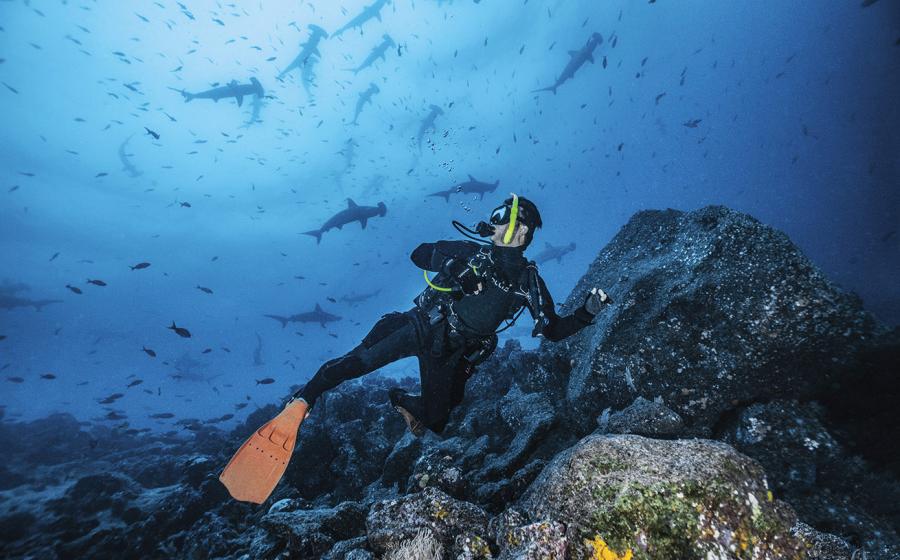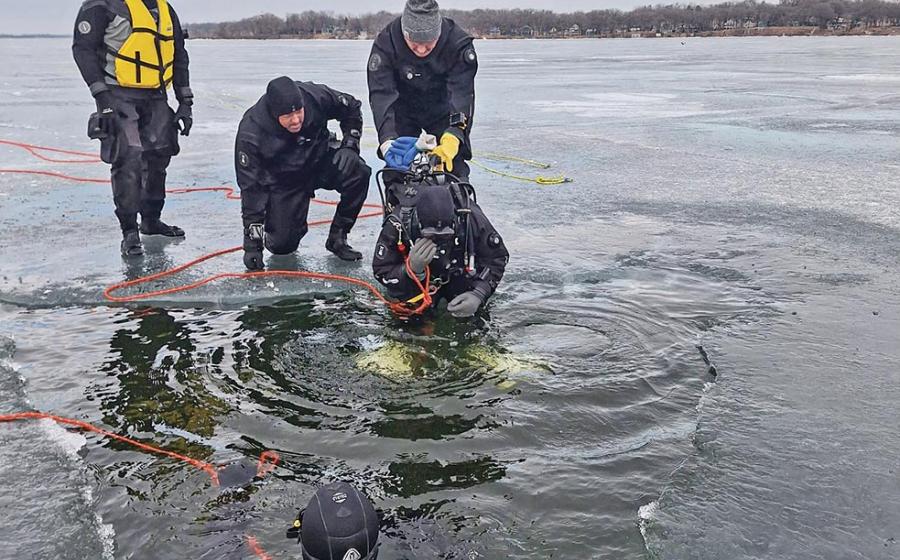Dive Equipment Trends for 2012

After decades of development, you might think diving equipment has reached a point where no further improvements would be needed — or even possible. It’s true that revolutionary new products are rare, but each year brings a respectable crop of dive equipment that is evolutionary in nature, as gear makers find ever more creative ways to make your scuba gear just a little bit better.
2012 is no exception — we’ll see innovations in several categories that will lighten our load, increase convenience and comfort, expand our underwater horizons, and help us capture the underwater realm in brilliant detail. Here are some of the trends you can expect to see in the year to come.
Trimming Down
Escalating baggage fees and weight restrictions have prompted a move toward lighter, compact dive gear, and the trend can be seen across nearly every gear category. Dive bags in particular have shed weight, and companies such as Akona, Armor, Aqua Lung, Stahlsac and Cressi offer robust, full-size bags that weigh in at 7 pounds or less.
A similar trend is taking place in regulators, with new and redesigned products such as the Apex Flight, Aqua Lung Legend, Mares Instinct, Sherwood Oasis and SCUBAPRO o Mk11 coming in significantly lighter than their predecessors. Equally well suited for easing the scales is a collection of new, light and ultra-light travel BCs that includes the Sherwood Ventura, SCUBAPRO GO (see image below), Zeagle Wicked, Cressi Travelight and Tusa Voyager.
One additional trend that might not drop the weight, but will certainly free up a bit more room in the dive gear bag, is the ongoing refinement of mid-range wetsuits. A renewed emphasis on seals, insulating linings, and additions such as enhanced neck dams and expanded zipper closures allow a new crop of premium-grade 3 mm suits to provide thermal protection equal to or, in some cases, greater than the average 5 mm suit of years past.

Simple Solutions
A number of the dive equipment innovations showing up on 2012 products are not groundbreaking design changes, but are instead upgrades to existing systems that will add an extra bit of convenience, comfort or performance. For example, several manufacturers are now offering highly -elastic, adjustment-free fin straps that eliminate the need for buckles, and allow divers to slip in and out of fins with the single tug of an integrated pull tab or loop. Tank straps are also being re-engineered for simpler cinching. Ratchet-style clamps hit the market this year, and manufacturers such as SCUBAPRO and Aqua Lung have introduced new buckle systems that take the guesswork and fiddling out of adjusting and securing tanks of various sizes.
Automated inflation systems such as Aqua Lung’s i3 and Mares’ AirTrim are becoming increasingly streamlined, as are integrated- weight systems, with virtually every major manufacturer offering some type of proprietary design that emphasizes ease of loading and deployment. Of equal interest are advances in second- stage- regulator design. Several new models are able to deliver a smaller, lighter profile without sacrificing performance, and innovations such as Aqua Lung’s Master Breathing System combine the functions of traditional venturi-assist and cracking effort adjustments into a single control.\
Taming Tech
The deep, dark and dangerous reputation that technical divers once wore like a badge of honor is morphing and mellowing as both manufacturers and agencies adopt and standardize select techniques and technologies to create a more civilized and organized approach to advanced- diving practices. A prime example of this trend is the continued expansion of PADI’s TecRec program, which now encompasses everything from mixed gas and rebreather training to cave- diving specialties.
In conjunction with the industry’s growing acceptance and promotion of more- advanced and more-technical diving practices, a number of rebreather manufacturers are developing crossover products that are less complex and demanding, but still offer recreational divers many of the benefits of a closed- circuit system. Examples include the Hollis Explorer and the KISS Gem.
In recognition of these advanced- diving practices, computer manufacturers are adding new models capable of handling ever-more- complex diving missions. Suunto’s Helo2 and Dive Rite’s NiTek mixed- gas computers are now joined by Oceanic’s DGO5, – which will also have PO2- monitoring capabilities to support closed- circuit rebreather diving.
Lights, Camera
From backups to primaries, LED- light technology now dominates all phases of underwater illumination. Now, it seems that each progressive year brings steady increases in luminosity, with corresponding price decreases. The latest generation of mid-sized hand-held torches such as Tusa’s TUL 1000 or Aqua Lung’s Alu Trio can pump out more lumens than a technical canister light from the pre-LED era, yet costs significantly less, and stows easily in a BC pocket. Equally impressive are the mighty mites such as Ikelite’s PC series and the Pelican Recoil series.
Having conquered the scuba dive-light market, LED technology is now coming to pre-eminence in the realm of underwater photography and video. Products such as Ikelite’s Pro-2800 and Light & Motion’s Sola series provide sufficient illumination for not only underwater video, but also digital still photography, replacing traditional strobes to take the guesswork out of exposure settings.
Also simplifying the underwater imaging process is a new crop of housings designed to accommodate the latest generation of compact still and video cameras. The underwater adaptation of the Go Pro system has created a lot of excitement among scuba divers, but there are plenty of other housings and accessories now on the market to support compact systems from Sony, Canon and Nikon. And for the ultimate in hand-s- free imaging, there’s latest generation of Liquid Image’s innovative in-mask camera, which now shoots 1080p video and 13 megapixel stills.










